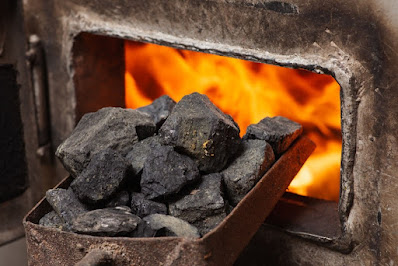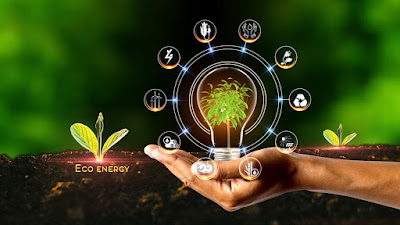Effects of Climate Change
Effects of Climate Change
Introduction:
Climate change is one of the most pressing issues of our time, with far-reaching consequences for our planet and its inhabitants. In this article, we will delve into the causes, real-life events, environmental impacts, effects on different countries, effects on human life, future possibilities, solutions, and major organizations fighting against climate change. By exploring these aspects, we aim to deepen our understanding of the subject and highlight the urgent need for collective action.
Major Causes of Climate Change:
Climate change is primarily driven by human activities that release greenhouse gases into the atmosphere. The five major causes include:
• Burning of Fossil Fuels:
The combustion of coal, oil, and natural gas for energy and transportation releases large amounts of carbon dioxide (CO2) into the atmosphere.
• Deforestation:
The removal of forests reduces the Earth's capacity to absorb CO2, contributing to increased greenhouse gas concentrations.
• Industrial Processes: Industrial activities, such as cement production and chemical manufacturing, emit greenhouse gases like methane (CH4) and nitrous oxide (N2O).
• Agricultural Practices: Intensive farming methods, including livestock production and rice cultivation, release significant amounts of methane and nitrous oxide.
• Land Use Changes: Alterations in land use, such as urbanization and conversion of natural habitats, result in the release of stored carbon and reduced carbon sequestration.
Recent Real Events Caused by Climate Change:
The impact of climate change has become increasingly evident through real-world events. Here are five recent phenomena backed by recorded data:
• Heatwaves and Wildfires: Rising temperatures have led to devastating heatwaves and wildfires, such as the Australian bushfires of 2019-2020 and the Western United States heatwave of 2021.
• Intensified Storms: Hurricanes and typhoons have become more frequent and severe, as evidenced by Hurricane Harvey in 2017 and Cyclone Idai in 2019.
• Melting Glaciers and Polar Ice:
The rapid melting of glaciers and polar ice caps, including Greenland and Antarctica, is contributing to rising sea levels.
• Coral Bleaching: Increased ocean temperatures have resulted in widespread coral bleaching events, damaging vital ecosystems like the Great Barrier Reef.
• Shifts in Ecosystems: Climate change has caused shifts in ecosystems and animal behavior, such as the alteration of migration patterns and the decline of certain species.
Effects of Climate Change in the Environment:
Climate change has far-reaching environmental consequences, including:
• Rising temperatures and heatwaves
Rising temperatures and heatwaves are key consequences of climate change. As global temperatures continue to increase, heatwaves become more frequent, intense, and prolonged. This poses significant risks to human health, particularly for vulnerable populations. Heatwaves can lead to heat-related illnesses, including heat exhaustion and heatstroke, as well as aggravate pre-existing health conditions. Additionally, heatwaves impact ecosystems, agriculture, and infrastructure, with economic and social implications. Mitigation and adaptation strategies, such as improving urban planning, implementing heatwave early warning systems, and promoting heat safety measures, are essential in addressing the challenges posed by rising temperatures and heatwaves.
• Changing precipitation patterns, leading to droughts or floods
Changing precipitation patterns, a consequence of climate change, have significant implications, often resulting in droughts or floods. As temperatures rise, evaporation rates increase, leading to drier conditions in some regions, causing droughts and water scarcity. Conversely, warmer air holds more moisture, resulting in intense rainfall and potential flooding in other areas. These shifts in precipitation patterns disrupt agricultural systems, endanger water supplies, and threaten ecosystems and biodiversity. Adapting to these changes requires implementing sustainable water management practices, investing in resilient infrastructure, and promoting climate-resilient farming techniques to mitigate the impacts of droughts and floods.
• Rising sea levels and coastal erosion
Rising sea levels, a consequence of climate change, pose a significant threat to coastal areas worldwide. As global temperatures increase, ice sheets and glaciers melt, contributing to the rise in sea levels. This phenomenon leads to coastal erosion, loss of land, and increased vulnerability to storm surges and flooding. Coastal communities, infrastructure, and ecosystems face the risk of displacement and destruction. Adaptation measures, such as coastal defense strategies, land-use planning, and sustainable coastal management, are crucial to mitigate the impacts of rising sea levels and safeguard coastal regions from further erosion and damage.
• Disruption of ecosystems and loss of biodiversity
Climate change is causing significant disruption to ecosystems and resulting in the loss of biodiversity. Rising temperatures, changing precipitation patterns, and extreme weather events alter habitats and disrupt ecological balance. Species face challenges such as habitat loss, shifting migration patterns, and increased risk of extinction. This loss of biodiversity has far-reaching consequences, affecting ecosystem functions, food webs, and overall ecosystem resilience. Conservation efforts, such as protected area management, habitat restoration, and sustainable land use practices, are essential to mitigate the negative impacts of climate change on ecosystems and preserve biodiversity for future generations.
• Ocean acidification and its impact on marine life
Ocean acidification, a consequence of climate change, is having a detrimental impact on marine life. As the oceans absorb increasing amounts of carbon dioxide, the pH levels decrease, making the seawater more acidic. This acidification disrupts the balance of calcium carbonate, which many marine organisms rely on to build shells and skeletons. It particularly affects coral reefs, shellfish, and plankton, threatening their survival and the entire marine food chain. Protecting marine ecosystems, reducing carbon emissions, and promoting sustainable fishing practices are crucial for mitigating the impacts of ocean acidification and preserving the health and biodiversity of our oceans.
For more detailed information, please refer to the following news articles:
a) "The Impact of Climate Change on Our Environment" - [Article Link]
b) "Biodiversity Loss and Climate Change: A Global Crisis" - [Article Link]
Effects of Climate Change in Different Countries:
The effects of climate change vary across different regions. Here are the impacts on five countries:
• United States: Increasing frequency of extreme weather events like hurricanes, wildfires, and heatwaves.
• India: Water scarcity, heatwaves, and changing monsoon patterns affecting agriculture and food security.
• Brazil: Deforestation in the Amazon rainforest, loss of biodiversity, and increased carbon emissions.
• Bangladesh: Rising sea levels leading to coastal erosion, flooding, and threats to millions of people.
• Australia: Prolonged droughts, heatwaves, and the Great Barrier Reef's degradation due to coral bleaching.
To learn more about the effects in each country, refer to the following news articles:
a) "Climate Change Impacts in the United States: A Comprehensive Overview" - [Article Link]
b) "India's Battle Against Climate Change: Impacts and Adaptation Strategies" - [Article Link]
c) "The Amazon Rainforest in Peril: Climate Change and Deforestation Crisis" - [Article Link]
d) "Bangladesh on the Frontline: The Devastating Effects of Climate Change" - [Article Link]
e) "Australia's Climate Change Reality: Challenges and Opportunities" - [Article Link]
Effects of Climate Change on Human Life:
Climate change poses significant risks to human well-being, including:
• Increased mortality and health risks due to heatwaves and extreme weather events
Heatwaves and extreme weather events pose significant threats to human health, leading to increased mortality rates and health risks. Rising temperatures during heatwaves can cause heat exhaustion, heatstroke, and dehydration, particularly among vulnerable populations such as the elderly, children, and individuals with pre-existing health conditions. Extreme weather events like hurricanes, floods, and wildfires can result in injuries, displacement, and the spread of infectious diseases. Additionally, prolonged exposure to extreme heat can exacerbate chronic health conditions like cardiovascular and respiratory diseases.
• Disruption of food production and reduced agricultural yields
Climate change-induced disruptions in food production and reduced agricultural yields have severe implications for global food security. Extreme weather events, changing precipitation patterns, and rising temperatures adversely affect crop growth, livestock health, and water availability, leading to food scarcity, higher prices, and increased vulnerability, especially in developing regions.
• Spread of infectious diseases and vector-borne illnesses
The spread of infectious diseases and vector-borne illnesses is amplified by climate change. Rising temperatures and changing precipitation patterns create favorable conditions for disease-carrying vectors like mosquitoes and ticks. This increases the transmission of diseases such as malaria, dengue fever, and Lyme disease, posing significant health risks globally.
• Displacement of populations due to rising sea levels and extreme weather events
Rising sea levels and extreme weather events caused by climate change have led to the displacement of populations worldwide. Coastal communities are particularly vulnerable, facing the risk of inundation and loss of habitable land. Displacement also occurs due to hurricanes, floods, and droughts, disrupting livelihoods and increasing social and economic challenges.
• Social and economic disruptions, particularly in vulnerable communities
Climate change exacerbates social and economic disruptions, especially in vulnerable communities. These communities, often lacking resources and infrastructure, bear the brunt of extreme weather events, leading to loss of homes, livelihoods, and essential services. The resulting poverty, unemployment, and social inequalities further compound the challenges they face, requiring targeted interventions and support.
Future Possibilities due to Climate Change:
If current trends continue, the future impacts of climate change could be even more severe. Possibilities include:
• Further temperature rise and heat extremes
• Accelerated sea-level rise and increased coastal flooding
• Intensified extreme weather events
• Disruption of ecosystems and loss of biodiversity
• Increased social, economic, and geopolitical challenges
Ways to Mitigate the Negative Impacts of Climate Change:
To combat climate change, we must take collective action. Here are five ways to mitigate its negative impacts:
• Transition to Renewable Energy:
Promote the use of clean and sustainable energy sources to reduce reliance on fossil fuels.
• Enhance Energy Efficiency: Encourage energy-efficient practices and technologies across industries and households.
• Sustainable Land Management: Protect forests, restore ecosystems, and adopt sustainable agricultural practices.
• Adaptation and Resilience: Invest in infrastructure and policies that enhance communities' resilience to climate change impacts.
• Raise Awareness and Education: Educate individuals and communities about climate change and its impacts, fostering a culture of sustainability.
Major Organizations Fighting Against Climate Change:
Several organizations are actively working to combat climate change. Here are five prominent ones and their contributions:
1. United Nations Framework Convention on Climate Change (UNFCCC): Facilitates global climate negotiations and promotes international cooperation. Official Website.
2. Greenpeace: Campaigns for environmental protection, renewable energy, and climate justice. Official Website.
3. World Wildlife Fund (WWF): Works towards conservation, sustainable development, and climate adaptation. Official Website.
4. The Nature Conservancy: Focuses on land and water conservation, climate action, and sustainable practices. Official Website.
5. Intergovernmental Panel on Climate Change (IPCC): Provides scientific assessments and guidance on climate change. Official Website.
Summary:
Climate change is an urgent global crisis with multifaceted impacts on our environment, societies, and economies. By understanding its causes, effects, and potential solutions, we can work together to mitigate its negative consequences and create a more sustainable future. Let us join hands and take action to safeguard our planet for generations to come.







Thank you for helping for my home work.
ReplyDeleteI like your website It usually helps me to study and understand things.☺☺☺☺
ReplyDelete